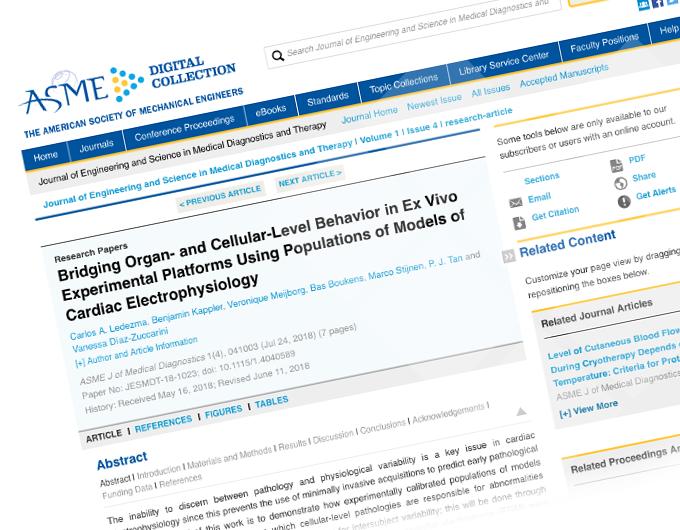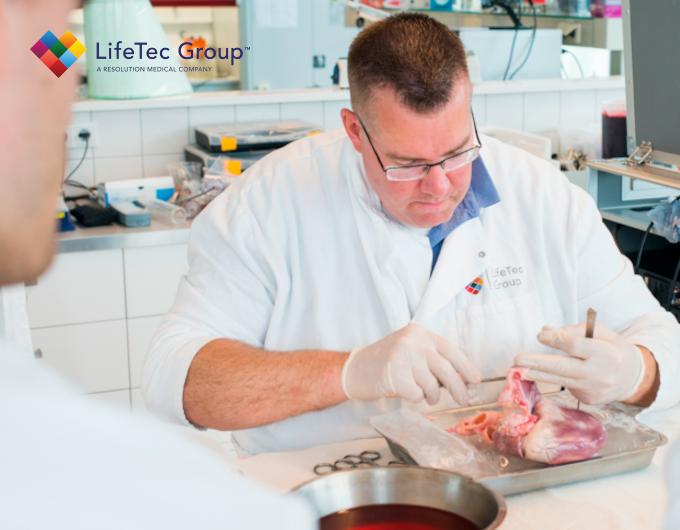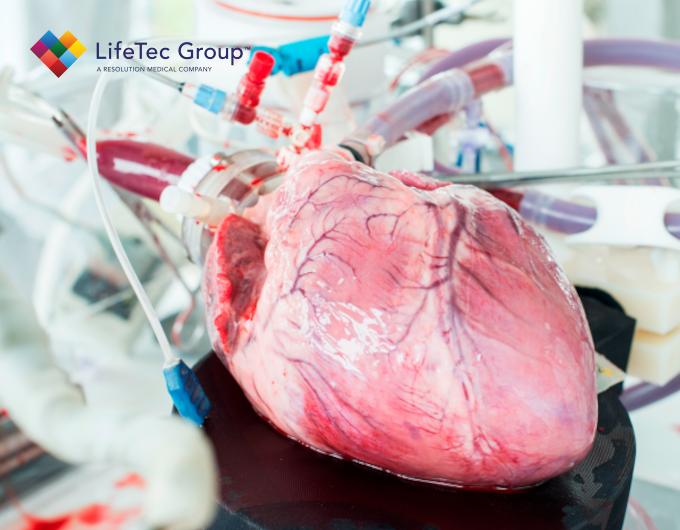Paper
"Bridging Organ- and Cellular-Level Behavior in Ex Vivo Experimental Platforms Using Populations of Models of Cardiac Electrophysiology"

Keywords
Calibration | Potassium | Physiology | Electrophysiology | Electrical conductance | Blood | Accounting
Authors
Carlos A. Ledezma, Benjamin Kappler, Veronique Meijborg, Bas Boukens, Marco Stijnen, P. J. Tan, Vanessa Díaz-Zuccarini
The goal of this work
The goal of this work is to demonstrate how experimentally calibrated populations of models (ePoM) may be employed to inform which cellular-level pathologies are responsible for abnormalities observed in organ-level acquisitions while accounting for intersubject variability;
this will be done through an exemplary computational and experimental approach.
Abstract
The inability to discern between pathology and physiological variability is a key issue in cardiac electrophysiology since this prevents the use of minimally invasive acquisitions to predict early pathological behavior.

Unipolar epicardial electrograms (EGM) were acquired during an ex vivo porcine heart experiment.
A population of the Ten Tusscher 2006 model was calibrated to activation–recovery intervals (ARI), measured from the electrograms, at three representative times.
The distributions of the parameters from the resulting calibrated populations were compared to reveal statistically significant pathological variations.
Activation–recovery interval reduction was observed in the experiments, and the comparison of the calibrated populations of models suggested a reduced L-type calcium conductance and a high extra-cellular potassium concentration as the most probable causes for the abnormal electrograms.
This behavior was consistent with a reduction in the cardiac output (CO) and was confirmed by other experimental measurements.

A proof of concept method to infer cellular pathologies by means of organ-level acquisitions is presented, allowing for an earlier detection of pathology than would be possible with current methods.
This novel method that uses mathematical models as a tool for formulating hypotheses regarding the cellular causes of observed organ-level behaviors, while accounting for physiological variability has been unexplored.
Direct link to publisher:
- ASME Digital Collection [link]
Interested in more about what we do at LifeTec Group? Contact us!
Call at +31 40 2989393 Or e-mail us
